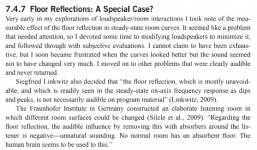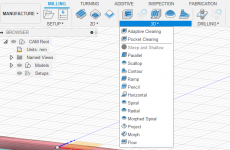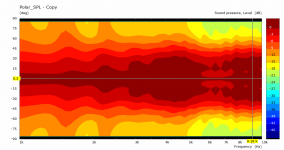I have the utmost respect for Floyd Toole and the research he has done but some of the comments made in that thread and some other's recently seem to draw conclusions that are not completely supported or at least don't account for every variable. With Toole being such an authority in general his comments carry much weight and will be repeated as gospel.He specifically mentions that having no floor bounce "will sound" unnatural. It makes me wonder why no one complains about head phones and unnatural sound 😕.
For example the Fraunhoffer Institute study is quoted as saying that removing the floor reflection was deemed unnatural. I haven't read the whole paper as I can't find it anywhere but there is a section quoted in another ASR thread.
An Enticing Marketing Story, Theory Without Measurement? | Page 4 | Audio Science Review (ASR) Forum
This describes using a 50mm absorber to reduce the level to below the ITU recommendation. So they changed it but did not eliminate it.
Toole's book has a section on it attached below. His own experiments found it to be a non issue. Are we to believe, Toole's own anecdote, the Franhoffer institute's conclusion, Soren Bech and the Archimedes Project or something else.
I have tried this both ways and I prefer to absorb the lateral reflections. It provides a clarity and preciseness that I prefer over the wider vaguer presentation with lateral reflections. If I was predominantly an Orchestral listener I would likely have the opposite opinion. I don't see a simple right or wrong answer to this one.More challenging is the discussion on lateral reflections.
Yes I have. My original plan was to use the stepped approach with 36mm sections and that still seems sensible if the waveguide is in a box. Making a free standing guide is more difficult. The 3D printing kit approach interests me and I will explore that too. Everything has to be finished in some way and that often ends up being a big part of the total time spent.I wouldn't be surprised if fluid has thought about this.
Ultimately, I think breaking the design into smaller pieces printed separately will prove most cost effective.
Attachments
I couldn't agree more with the above, I was thinking the same thing. There are several small sections where my own ideas about audio deviate from the works and research of Toole. But it is easily explained why such differences could exist.
His preference for multi-channel I can understand. It is by far the better format for several reasons. With my ambient channels I come quite close to replicating parts of it. If the majority of the soundtrack of my life had been available in multi-channel format it would have been an easier choice.
I think Stereo as a format leaves us with a bunch of holes, but there's more than one way to interpret those and that builds up to the mystique of the format 😉. Leading to many myths and beliefs.
If all we'd want is a faithful reproduction of the event, multi-channel would be a far better choice. I will settle for a somewhat faithful but entertaining reproduction in Stereo+ due to having most of the works I'm interested in locked into the stereo format.
(by the way, the worship of Toole's gospel on ASR is scary at times)
His preference for multi-channel I can understand. It is by far the better format for several reasons. With my ambient channels I come quite close to replicating parts of it. If the majority of the soundtrack of my life had been available in multi-channel format it would have been an easier choice.
I think Stereo as a format leaves us with a bunch of holes, but there's more than one way to interpret those and that builds up to the mystique of the format 😉. Leading to many myths and beliefs.
If all we'd want is a faithful reproduction of the event, multi-channel would be a far better choice. I will settle for a somewhat faithful but entertaining reproduction in Stereo+ due to having most of the works I'm interested in locked into the stereo format.
(by the way, the worship of Toole's gospel on ASR is scary at times)
Last edited:
I like ASR there are some really good discussions and it attracts a lot of knowledgeable people. On the flip side half the threads degenerate into nonsense due to people with just enough knowledge to be dangerous 🙂
Yes I have. My original plan was to use the stepped approach with 36mm sections and that still seems sensible if the waveguide is in a box. Making a free standing guide is more difficult. The 3D printing kit approach interests me and I will explore that too. Everything has to be finished in some way and that often ends up being a big part of the total time spent.
what software would you use to generate the tool paths for the stepped approach? I don't think VCarvePro can quite get there - it can do 2.5D and "brute force" 3D but I don't know how to get it to do a mix of the two.
Well, I am learning it, pieces here and there, but no more than I have to because I'm 10x quicker in Sketchup if I can do it there.
Fusion's 3D milling menu looks richer than Vectrix. I should give it a go.
OTOH, when I work with a CNC shop, they generally want to make their own tool paths so my efforts in that direction are to get a time estimate and to complete the virtual prototype. The typical CNC shop uses SolidWorks.
Fusion's 3D milling menu looks richer than Vectrix. I should give it a go.
OTOH, when I work with a CNC shop, they generally want to make their own tool paths so my efforts in that direction are to get a time estimate and to complete the virtual prototype. The typical CNC shop uses SolidWorks.
I am considering building a pair of corner line array speakers and there is one thing that I would like to clarify:
The original design is symmetrical resulting in a 45 degree angle which makes the equilateral listening triangle quite impossible.
I designed a modified version with BassBox Pro that would have a 30 degree angle instead
I am wondering if that would jeopardize the whole idea behind corner line arrays? Would there by any drawbacks?
Thank you
The original design is symmetrical resulting in a 45 degree angle which makes the equilateral listening triangle quite impossible.
I designed a modified version with BassBox Pro that would have a 30 degree angle instead
I am wondering if that would jeopardize the whole idea behind corner line arrays? Would there by any drawbacks?
Thank you
I've followed the tread you have going on ASR. Did you consider free standing arrays? You can do a few things with free standing arrays that you can't with corner arrays.
- freedom of aiming (vary the toe-in to your liking)
- make room for proper absorption of first reflections (placing them a bit out from the side wall)
- considering a shape of the enclosure that helps keep diffraction under control https://www.diyaudio.com/forums/full-range/242171-towers-25-driver-range-line-array-663.html#post6524791
- use a bit of asymmetry in placement to avoid having two exactly the same dips due to placement geometry
- freedom of aiming (vary the toe-in to your liking)
- make room for proper absorption of first reflections (placing them a bit out from the side wall)
- considering a shape of the enclosure that helps keep diffraction under control https://www.diyaudio.com/forums/full-range/242171-towers-25-driver-range-line-array-663.html#post6524791
- use a bit of asymmetry in placement to avoid having two exactly the same dips due to placement geometry
Well, that is a good question and the reason behind it is why I'm designing for cardioid pattern - to minimize the need for designing the speaker to fit tightly into a corner. But cardioid doubles or triples the number of drivers and eliminates the corner support you would otherwise get at the low end.
But if your situation allows or dictates use of the corner as I did for my first two projects:
***Asymmetry is a good thing as it places the reflection nulls/dips from the two adjacent walls on different frequencies. With a symmetrical design, they line up and are twice as deep.
***30 degrees is also a good choice. I posted a graph sometime this spring showing how you can fill a room from a corner with a 60 degree beamwidth toed in 30 degrees. The thing to be careful of with full range driver line array is that your primary listening position isn't so far off axis that you lose treble. Of course you will equalize for that spot but you are already boosting treble because of the line array roll off.
What is the whole idea behind corner line arrays anyway?
Using the corner maximizes corner support for the bass and minimizes boundary interference. Being tight in the corner pulls the first reflection points in to the edge of the baffle and raises the frequency of the corresponding reflection null meaning you need a lower thickness of absorber there.
The corner line array may have to be accompanied by surround speakers or ambience drivers to add back delayed lateral reflections that use of the corner eliminates.
But if your situation allows or dictates use of the corner as I did for my first two projects:
***Asymmetry is a good thing as it places the reflection nulls/dips from the two adjacent walls on different frequencies. With a symmetrical design, they line up and are twice as deep.
***30 degrees is also a good choice. I posted a graph sometime this spring showing how you can fill a room from a corner with a 60 degree beamwidth toed in 30 degrees. The thing to be careful of with full range driver line array is that your primary listening position isn't so far off axis that you lose treble. Of course you will equalize for that spot but you are already boosting treble because of the line array roll off.
What is the whole idea behind corner line arrays anyway?
Using the corner maximizes corner support for the bass and minimizes boundary interference. Being tight in the corner pulls the first reflection points in to the edge of the baffle and raises the frequency of the corresponding reflection null meaning you need a lower thickness of absorber there.
The corner line array may have to be accompanied by surround speakers or ambience drivers to add back delayed lateral reflections that use of the corner eliminates.
Thank you for coming back to me, appreciate your answers
I got hooked on to the corner array topic after reading this:
The Murphy Corner-Line-Array Home Page
There is the discussion ongoing on ASR too (Murphy Corner Line Array | Page 3 | Audio Science Review (ASR) Forum)
I am really interested in trying it with 20 pieces of ND91-8 drivers each and potentially with the 30 degree variant instead of the original 45 degree one
I am trying to find out if that could work as well and if it would yield the same advantages as the original design - if yes then I will go for it (also for the reasons I mentioned in the ASR thread)
I got hooked on to the corner array topic after reading this:
The Murphy Corner-Line-Array Home Page
There is the discussion ongoing on ASR too (Murphy Corner Line Array | Page 3 | Audio Science Review (ASR) Forum)
I am really interested in trying it with 20 pieces of ND91-8 drivers each and potentially with the 30 degree variant instead of the original 45 degree one
I am trying to find out if that could work as well and if it would yield the same advantages as the original design - if yes then I will go for it (also for the reasons I mentioned in the ASR thread)
In the meantime I have decided to move forward with this. I will use 24pcs of ND91-8 drivers per channel in a box with Qtc=0.5 and will use the 30 degree design instead of the original 45 degree one in order to be able to maintain the equilateral triangle listening setup (the size of the triangle will be approx. 350cm)
Build will start as soon as the drivers arrive in approx. 2 months' time
Build will start as soon as the drivers arrive in approx. 2 months' time
Have you seen the results of Erin's test on the Danley SH50?
Danley Sound Labs SH-50 Professional Audio Speaker Review
I guess with a bit of EQ it's quite the performer!
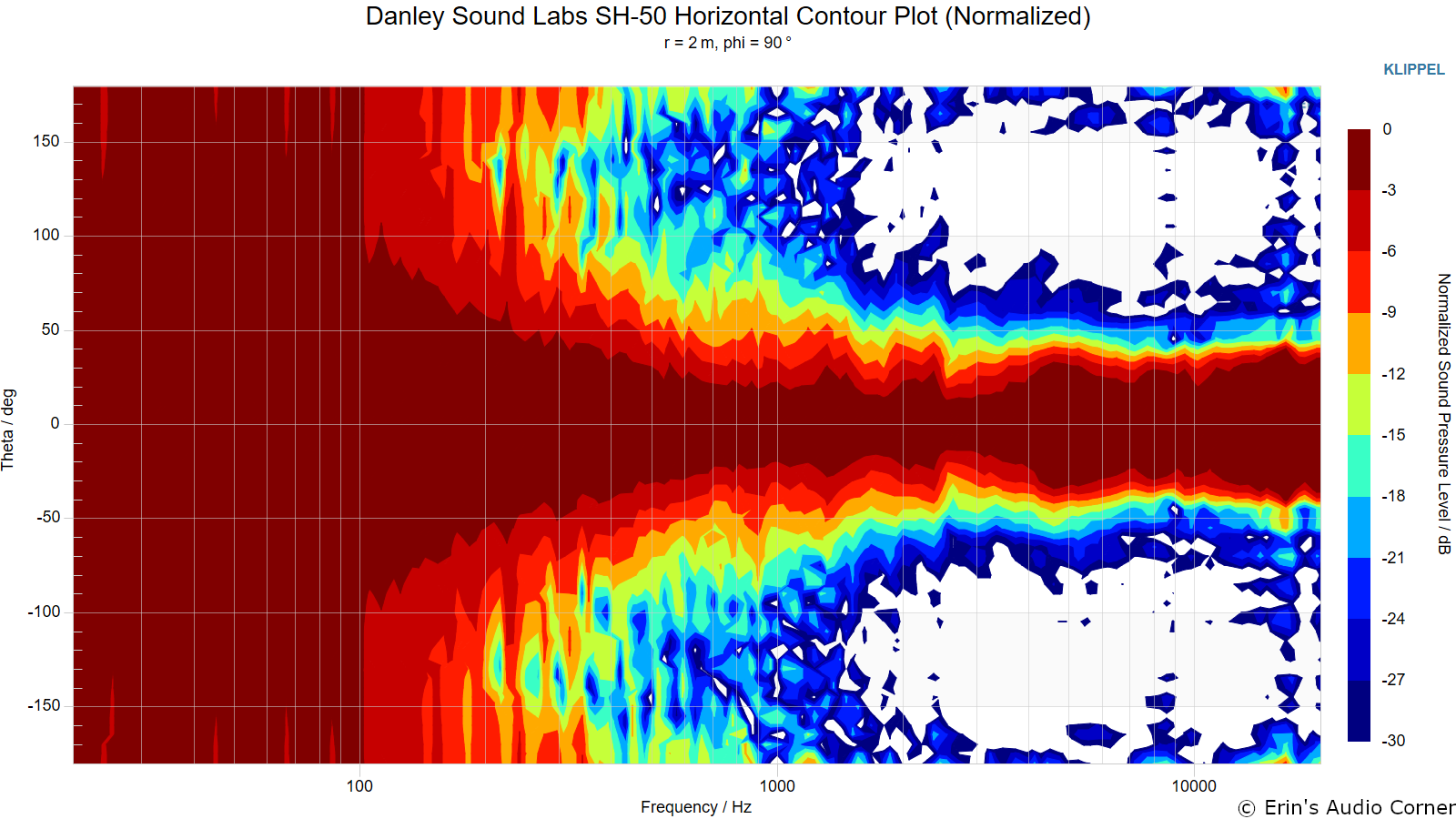
Standard, it is a bit more rough than many look for. Yet I don't think that will hold it back when listening to it in a room. Avoidance of reflections would be stronger than with many other speakers.
Way less ceiling bounce than average speakers:
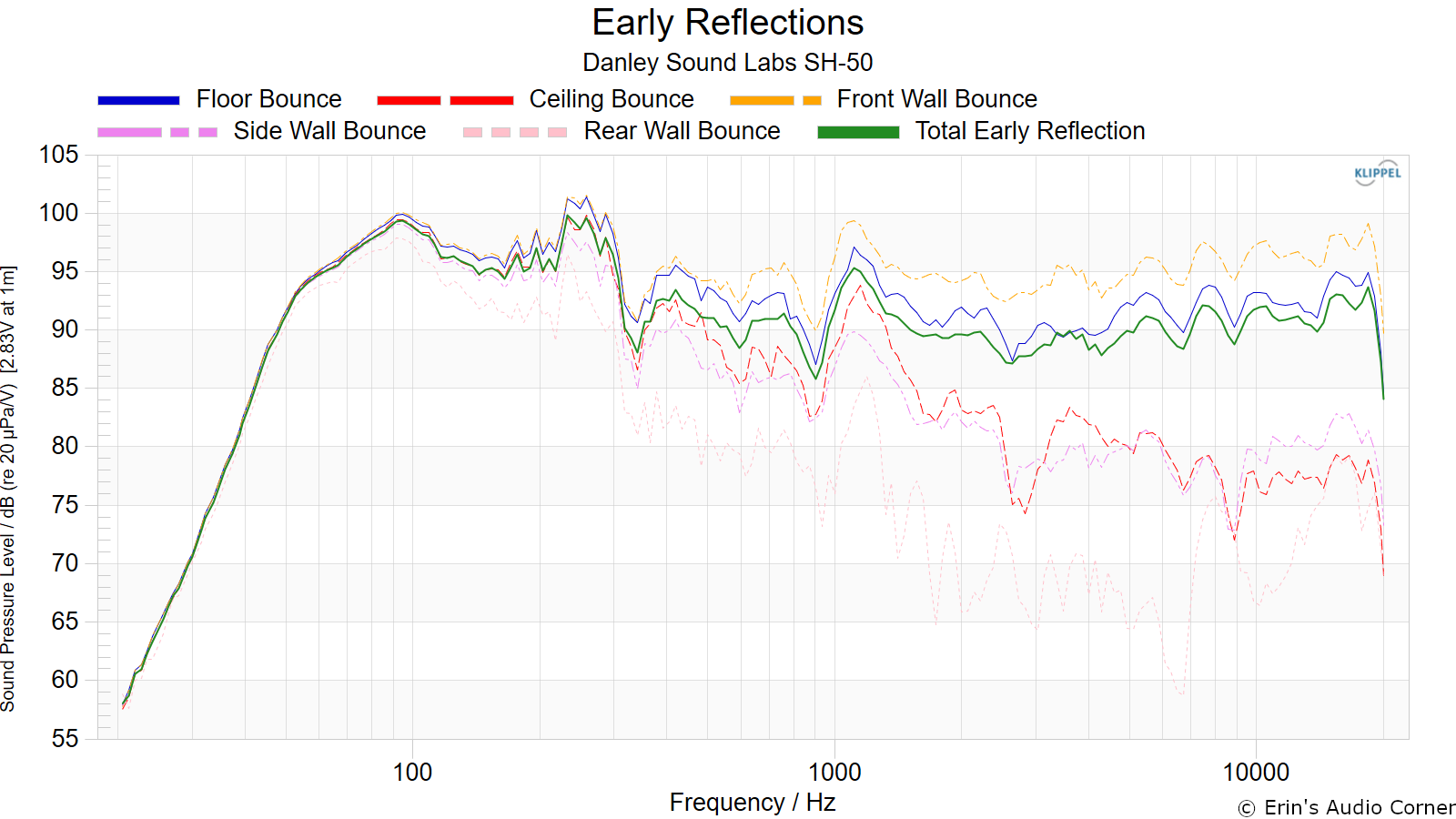
Distortion performance is impressive, as expected:
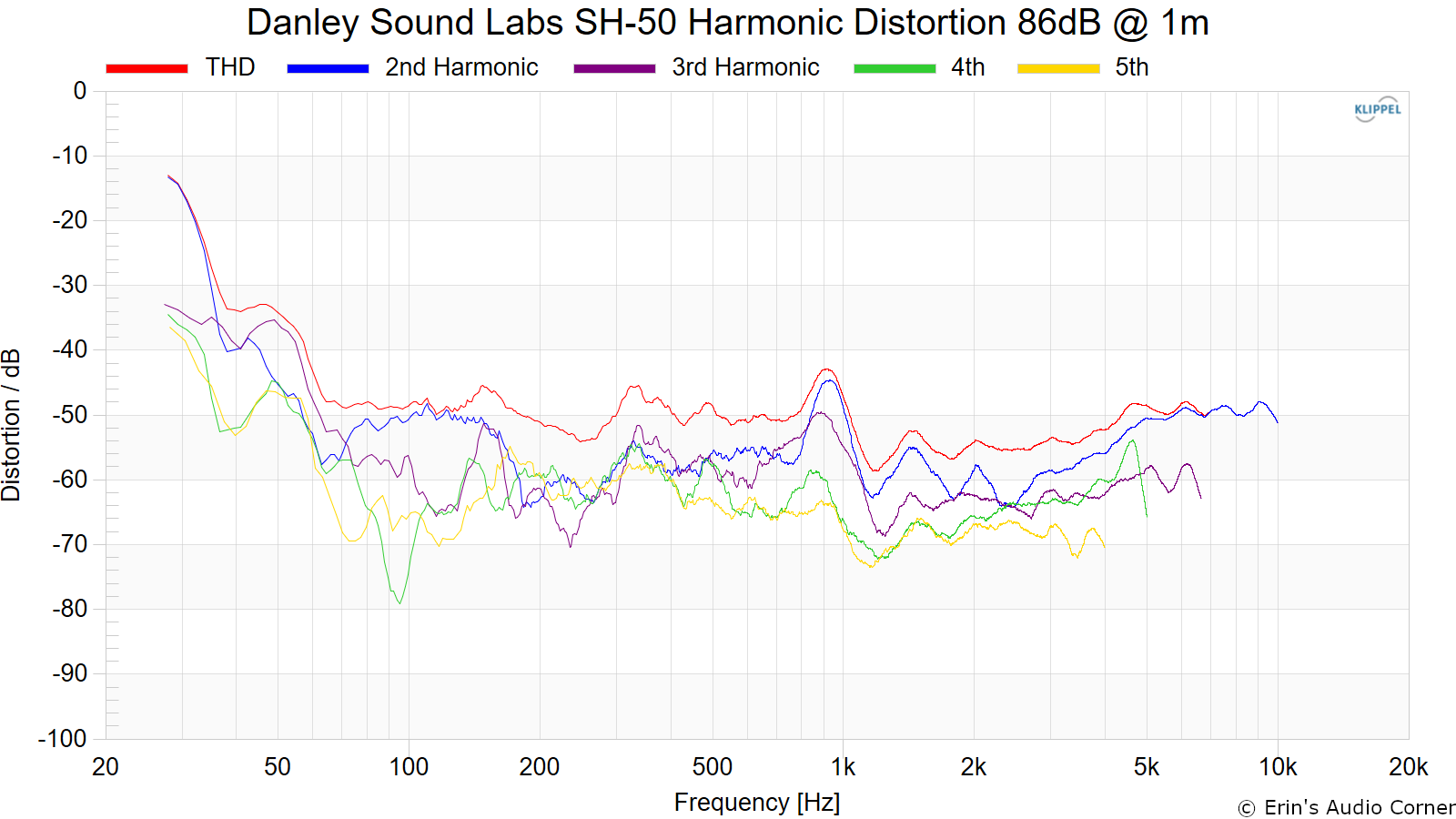
Danley Sound Labs SH-50 Professional Audio Speaker Review
I guess with a bit of EQ it's quite the performer!

Standard, it is a bit more rough than many look for. Yet I don't think that will hold it back when listening to it in a room. Avoidance of reflections would be stronger than with many other speakers.
Way less ceiling bounce than average speakers:

Distortion performance is impressive, as expected:

Last edited:
Well it certainly needs the EQ. I didn't realize how badly. But that is what you are missing out of the box at least, if you go passive XO.
No, I hadn't seen that review but I knew about the SH-50 and Hyperion and how well regarded the SH-50 is. They are what I point to to justify my narrow directivity. I would argue my approach has same overall directivity, except smoother and extending lower except its not fair to compare one speaker's simulation to another's actual measurement.
The SH-50 shows some narrowing in the low khz region. What is distinctive to me is that it actually widens slightly in the top octave. That is hard to do in a conical horn with very little in the way of mouth termination. The polar chart of most conical horns wouldn't be a solid dark red in this region. There must be some Danley magic in the throat that Mark100 should figure out.
The subjective part of the review talks about how loud they can go and their dynamics. That is part of the Danley signature. He is less interested in the right level of delayed reflections. We've been over this ground before.
I think the reason they have such low THD is their multiple midrange drivers, overkill perhaps but provides enormous headroom and part of the great dynamics. BWaslo has shown you can get by with one mid but it seems to me that is a false economy.
No, I hadn't seen that review but I knew about the SH-50 and Hyperion and how well regarded the SH-50 is. They are what I point to to justify my narrow directivity. I would argue my approach has same overall directivity, except smoother and extending lower except its not fair to compare one speaker's simulation to another's actual measurement.
The SH-50 shows some narrowing in the low khz region. What is distinctive to me is that it actually widens slightly in the top octave. That is hard to do in a conical horn with very little in the way of mouth termination. The polar chart of most conical horns wouldn't be a solid dark red in this region. There must be some Danley magic in the throat that Mark100 should figure out.
The subjective part of the review talks about how loud they can go and their dynamics. That is part of the Danley signature. He is less interested in the right level of delayed reflections. We've been over this ground before.
I think the reason they have such low THD is their multiple midrange drivers, overkill perhaps but provides enormous headroom and part of the great dynamics. BWaslo has shown you can get by with one mid but it seems to me that is a false economy.
I suspect that having headroom (and plenty of it) is one of the qualities that is hard to beat. So I agree that having one mid would not be a choice I would make.
The Hyperion is a domesticated version of a synergy, starting with a more sophisticated and better behaved horn. At least that's what I suspect.
Whatever you do, I'd recommend to build in as much headroom as you can (up to a point where it's still economical to do so). 🙂
If you do that, you'd be well on your way to come out quite close to (or surpass) these results.
The Hyperion is a domesticated version of a synergy, starting with a more sophisticated and better behaved horn. At least that's what I suspect.
Whatever you do, I'd recommend to build in as much headroom as you can (up to a point where it's still economical to do so). 🙂
If you do that, you'd be well on your way to come out quite close to (or surpass) these results.
I'm not sure there is any magic there, if I normalize my 50x50 with secondary flare sim to 0 degrees it's pretty wide at 8K and up.The SH-50 shows some narrowing in the low khz region. What is distinctive to me is that it actually widens slightly in the top octave. That is hard to do in a conical horn with very little in the way of mouth termination. The polar chart of most conical horns wouldn't be a solid dark red in this region. There must be some Danley magic in the throat that Mark100 should figure out.
Attachments
- Home
- Loudspeakers
- Full Range
- Full range line array for wall or corner placement
